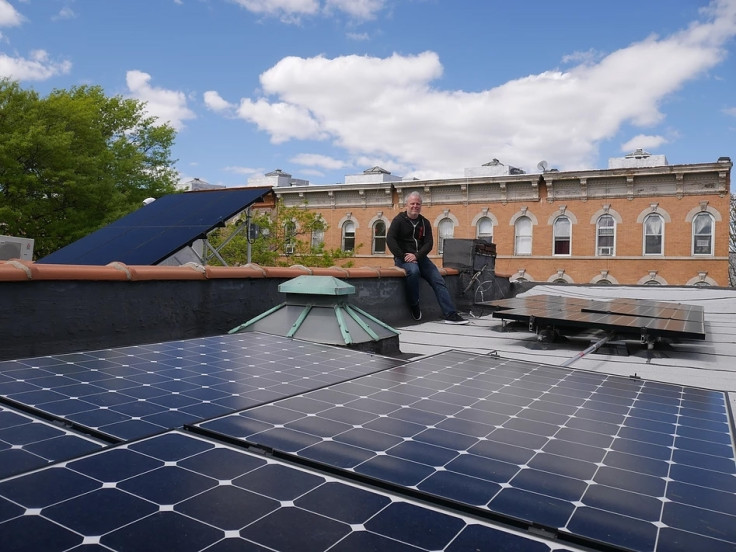Solar power can make you rich: Users could sell electricity to neighbours using blockchain
LO3 Energy wants to enable people to make peer-to-peer energy transactions with other users across the grid.

Fancy making some cash? If you have solar panels installed on your home or office building, you could be able to sell the electricity you generate directly to other users.
At the moment, most power is generated via gas, nuclear and coal power plants, which is then sold to customers over the national power grid via suppliers.
There are efforts to generate clean renewable energy using solar, wind, hydro and biomass plants and farms, but for the most part, the national grid continues to use traditional power sources – and solar panels only really benefit their owners.
But what if there was a way to simply sell the solar energy you've generated to someone else, without you needing to be a major energy provider? New York-based startup LO3 Energy has come up with an idea – building a technical platform that makes use of peer-to-peer networking technology as well as financial technology.
Building self-sufficient communities
How does the blockchain work?
A blockchain is a shared ledger of transactions in a database relating to the virtual currency bitcoin. It is possible thanks to a combination of computer science concepts including distributed consensus algorithms, state machine replication, peer-to peer networking protocols and cryptography.
Miners use networks of computers to collect series of cryptocurrency transactions at a regular scheduled time and write them into a list known as a "block", which is then added to a big ledger called the "blockchain".
A copy of the blockchain is held by all the computers on a network. As transactions occur, the blockchain is constantly updated and verified by the network with the data time-stamped into blocks, so no one entity can control any transaction.
LO3 Energy is working on a project called Brooklyn Microgrid, whereby users will be able to sell energy to someone else on the national grid and receive payments using peer-to-peer and the blockchain.
No alterations need to be made to the national grid – instead, there would be a virtual network of smart meters connected to buildings that have solar panel arrays, forming a microgrid.
If the building owners have excess electricity, they can sell energy credits on the TransActive Grid peer-to-peer trading platform to someone else anywhere on the grid using a mobile app – even if they only live next door.
The idea is for the community to become self-sufficient and to be able to help meet demand within the community, rather than selling off excess power to utility providers, as well as to build a microgrid that can stay online even when the national grid experiences power outages, such as during a natural disaster like Hurricane Sandy in 2012.
Microgrid coming in 2017
The system would also let users set the prices they're willing to pay for different types of energy, and the network can be customised to suit certain needs – so if it's a hot day and everyone wants to have their air conditioning on, they could receive a discounted energy price if they are willing to turn other energy-guzzling equipment in their homes off, such as their boilers.
This sounds like a fairly disruptive idea that traditional energy providers probably wouldn't like, but LO3 Energy has a powerful ally in its corner – Siemens, which is working with the startup by combining Siemens' microgrid control system with LO3 Energy's TransActive Grid trading platform.
Using the blockchain for the network means that all the transactions between energy producers and consumers are tracked, encrypted and cannot be tampered with.
So far, trials have been successfully held in New York using 60 test microgrid meters and 350 participants. LO3 Energy aims to have the microgrid up and running before the end of 2017, and hopefully to eventually demonstrate the microgrid in other countries too.
People and organisations who want to sign up and join the Brooklyn Microgrid can sign up here.
© Copyright IBTimes 2025. All rights reserved.






















